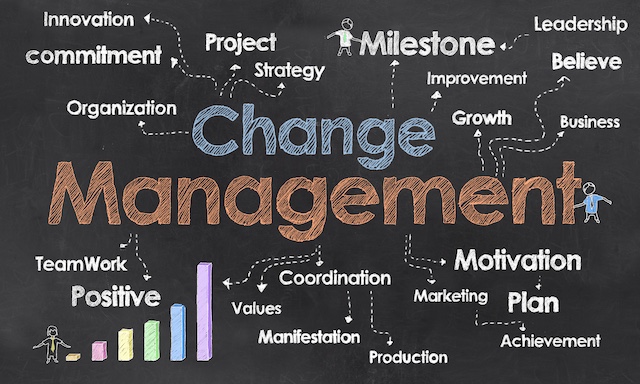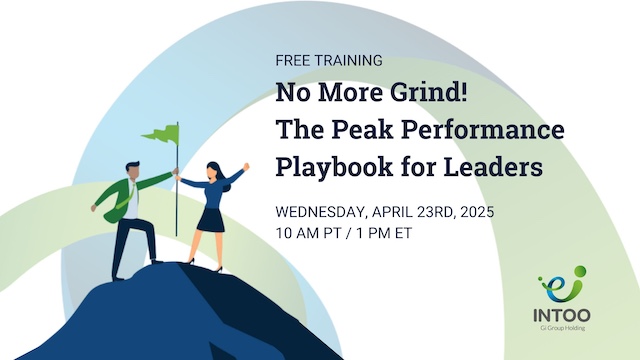Company downsizing is one of the most challenging decisions businesses face, yet it has become increasingly common in today’s volatile economic and technological landscape. As organizations navigate the complexities of 2025—economic fluctuations, trade tariffs, industry disruptions, and the proliferation of AI—they may find themselves needing to restructure their workforce to remain competitive.
While downsizing may be driven by strategic necessity, how it’s managed makes all the difference. A thoughtful, transparent approach to downsizing preserves trust, supports employee transitions, and maintains business continuity by reshaping the organization to align with long-term goals while treating people with dignity and care.
What Does It Mean if a Company Is Downsizing?
Downsizing refers to the intentional reduction of a company’s workforce or operations, typically to improve operational efficiency, reduce costs, or respond to evolving business conditions.
While it often involves layoffs, downsizing can also include voluntary separation programs, early retirement incentives, or broader structural changes. Regardless of the approach, the decision to downsize carries significant implications for both departing and remaining employees, as well as for the overall organization. Leadership will need to consider how the business will move forward with reduced staff, retain team members, and improve performance if morale takes a dip.
The Critical Role of Leadership During Downsizing
Effective leadership ensures corporate downsizing is handled with integrity, empathy, and strategic foresight. Leaders must guide the transition while minimizing disruption and preserving employee trust.
The importance of outplacement support
Offering outplacement support is a key component of an ethical downsizing strategy. Services such as career coaching, resume development, interview preparation, and job search assistance can greatly ease the transition for departing employees. These services also send a clear message that the organization values its workforce, even in times of change. By investing in outplacement, companies can reduce legal and reputational risk while supporting the long-term success of former employees.
Communicating effectively with remaining employees
Transparent and timely communication with employees who remain is equally important. Leadership must clearly articulate the reasons for the downsizing, the criteria used to make decisions, and the strategic vision moving forward. This level of transparency helps mitigate fear and uncertainty, reinforces a sense of stability, and enables employees to refocus on their roles with greater confidence.
Preserving organizational culture and trust
How an organization manages downsizing has lasting implications for its internal culture and external reputation. A well-executed process can strengthen resilience and reinforce organizational values. Conversely, a poorly managed approach can erode both workforce and consumer trust, reduce engagement, and impact future talent acquisition.
Primary Causes of Downsizing in Businesses
Businesses may downsize for various reasons, often in response to internal inefficiencies or external pressures. Understanding the root causes can help organizations take a more strategic and informed approach to workforce reduction, and guide them in moving forward successfully.
Financial challenges
Economic downturns, declining revenue, or increased operational costs may force businesses to cut expenses quickly. In many cases, reducing payroll through corporate downsizing becomes necessary to preserve cash flow, maintain solvency, or stabilize the business during turbulent times.
Mergers and acquisitions
When two organizations combine, overlapping roles and departments are common. Companies may reduce headcount to eliminate redundancies and achieve the operational efficiencies that often justify a merger or acquisition. Downsizing in these situations is typically focused on streamlining operations and aligning structures under a unified corporate strategy.
Technological advancements
As companies adopt automation, artificial intelligence, and other emerging technologies, some roles become obsolete or require fewer human inputs. This shift enables increased productivity and lower labor costs but can also result in workforce reductions.
Industry changes
Changes in consumer behavior, supply chains, or regulatory frameworks can significantly affect how companies operate. To remain competitive or compliant, businesses may need to reorganize departments, scale back product lines, or exit certain markets—all of which can lead to corporate downsizing.
Management changes
New leadership often brings a revised strategic vision and operational priorities. As part of this shift, leadership may reevaluate staffing needs and make structural changes to drive performance, reduce costs, or reposition the company. Downsizing in this context is typically part of broader transformation efforts.
Overstaffing
Rapid expansion or overly optimistic hiring can lead to a workforce that exceeds actual business needs. When growth slows or demand plateaus, organizations may find themselves with excess capacity. Downsizing helps recalibrate staffing levels to better align with current workloads and financial targets.

Best Practices for Effective Downsizing
Downsizing is a delicate process that requires careful planning, execution, and follow-up to ensure the organization achieves its goals while minimizing harm to employees and preserving company culture. Below is an in-depth exploration of best practices for managing downsizing effectively.
1. Develop a comprehensive downsizing plan
Timeline creation: Map out every step of the process—from initial announcements to final departures—while including buffer time for unexpected challenges. A structured schedule helps maintain momentum, manage expectations, and avoid last-minute confusion.
Cross-departmental collaboration: Work closely with HR, management teams, and legal advisors to ensure compliance with labor laws and alignment with strategic goals. Involving multiple departments promotes consistency and fairness across all aspects of the process and mitigates risk.
Offboarding logistics: Prepare severance paperwork, coordinate IT access changes, and conduct exit interviews professionally. Ensuring a respectful and organized departure process supports employee dignity and minimizes operational risks.
Monitoring systems: Implement systems to track progress toward downsizing goals while identifying areas requiring adjustments. Regular checkpoints allow for course correction and ensure transparency with leadership and stakeholders.
2. Engage senior leadership throughout the process
Senior leadership must be actively involved in every stage of downsizing, from planning to post-downsizing recovery.
Visibility: Leaders should remain accessible to employees during this period, serving as sources of information and reassurance. Their presence demonstrates accountability and transparency.
Empathy in leadership: Showing compassion during interactions with affected employees builds trust across all levels of the organization. How leaders communicate and care sets the tone for the entire process.
3. Establish fair and objective criteria
Creating fair and objective criteria for determining layoffs is critical to maintaining trust and avoiding perceptions of bias. It also helps to protect the company in the event of legal challenges.
Performance metrics: Use measurable data, such as productivity levels or sales results, to guide decisions.
Skill sets: Evaluate employees based on their ability to contribute to future organizational goals.
Seniority: Consider tenure as part of the criteria but avoid relying solely on “last in, first out” policies, which can overlook valuable contributors.
4. Be transparent
Transparent and effective communication is crucial to effective downsizing. Employees should hear about changes directly from leadership, not through rumors or speculation. Transparency fosters trust and reduces anxiety.
Early announcements: Inform employees as soon as possible about the potential for downsizing. This allows affected staff time to prepare for transitions, and may be legally required, depending on the headcount of the reduction and federal and state laws.
Clear explanations: Articulate the reasons for downsizing, such as financial challenges or restructuring needs, and outline the process and timeline.
Two-way dialogue: Encourage questions and feedback from employees through multiple channels, such as town hall meetings, anonymous surveys, or one-on-one sessions.
5. Support departing employees
Providing robust support for departing employees is essential for maintaining goodwill and protecting the company’s reputation.
Severance packages: Offer compensation that reflects employees’ tenure and contributions, including extended benefits where possible.
Outplacement services: Provide career counseling, resume assistance, and job placement resources to help employees transition smoothly into new roles.
Mental health resources: Recognize the emotional toll of layoffs by offering access to counseling through employee assistance programs (EAP).
Compassionate notifications: Conduct layoff conversations privately with empathy and clarity. Allow time for employees to process the news and provide detailed next steps.
6. Focus on long-term cultural rebuilding
Once downsizing is complete, rebuilding organizational culture is essential for long-term success.
Core values reinforcement: Emphasize the company’s mission and values through internal communications and team activities. Reconnecting employees with a shared purpose helps restore morale and a sense of belonging.
Recognition programs: Celebrate employee achievements to foster pride and engagement. Public recognition, even in small ways, can go a long way toward rebuilding confidence and loyalty.
Flexible work options: Consider offering perks like flexible schedules or additional paid time off as gestures of goodwill toward remaining staff. These accommodations can reduce stress and signal that employee well-being is a priority.
Cross-training initiatives: Equip employees with new skills to adapt to combined roles or expanded responsibilities after layoffs. Empowering staff through learning opportunities promotes agility and long-term growth.
7. Maintain morale among remaining employees
The remaining workforce often experiences “survivor’s guilt” and anxiety about future cuts or increased workloads. Addressing these concerns is crucial to maintaining morale and productivity.
Reassurance: Communicate clearly about the company’s future direction and reassure employees of their value within the organization. Leaders can rebuild trust and create a sense of shared purpose by actively engaging with remaining employees.
Team-building activities: Engage employees in activities that foster collaboration and strengthen bonds among teams.
Professional development opportunities: Offer training programs or mentorship initiatives to help remaining employees grow in their roles. This can be especially helpful when reductions in headcount force employees to take on new responsibilities and unfamiliar roles.
Workload management: Redistribute tasks thoughtfully to avoid overwhelming staff while ensuring critical business functions continue smoothly.
Final Thoughts on Company Downsizing
Downsizing is never an easy decision, but it is sometimes necessary for businesses to remain competitive in challenging environments. When handled correctly—with transparency, fairness, and compassion—it can help organizations achieve their goals while maintaining trust among employees.
INTOO can partner with your organization to create a smoother downsizing process through our outplacement and career development services. Whether you need personalized career transition programs for your outgoing employees or employee development programs for your remaining workforce, we’re here to help. Contact us today to learn more.











